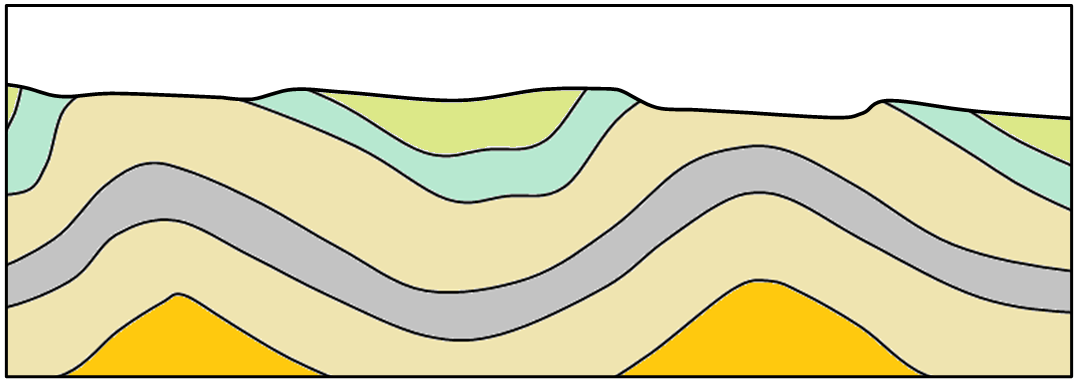Chapter 11 Geological Structures
The topics covered in this chapter can be summarized as follows:
| Section | Summary |
|---|---|
| 12.1 Stress and Strain | Stress within rocks—which includes compression, extension and shearing—typically originates from plate-boundary processes. Rock that is stressed responds with either elastic or plastic strain, and may eventually break. The way a rock responds to stress depends on its composition and structure, the rate at which strain is applied, and also to the temperature of the rock body and the presence of water. |
| 12.2 Fracturing and Faulting | Fractures (joints) typically form during extension, but can also form during compression. Faulting, which involves the displacement of rock, can take place during compression or extension, as well as during shearing at transform boundaries. Thrust faulting is a special form of reverse faulting. |
| 12.3 Folding | Folding is generally a plastic response to compressive stress, although some brittle behaviour can happen during folding. An upward fold is an antiform. A downward fold is a synform. The axis of a fold can be vertical, inclined, or even horizontal. If we know that the folded beds have not been overturned, then we can use the more specific terms: anticline and syncline. |
| 12.4 Measuring Geological Structures | It is important to be able to measure the strike and dip of planar surfaces, such as a bedding planes, fractures or faults. Special symbols are used to show the orientation of structural features on geological maps. |
Questions for Reviews
- What types of plate boundaries are most likely to contribute to the following?: a) compression, b) extension, and c) shearing.
- Explain the difference between elastic strain and plastic strain.
- List some of the factors that influence whether a rock will deform (in either an elastic or plastic manner) or break when placed under stress.
- Label the types of folds in this diagram, and label any of the important features of the folds.

Figure A - Explain why fractures are common in volcanic rocks.
- What is the difference between a normal fault and a reverse fault, and under what circumstances would you expect these to form?
- What type of fault would you expect to see near to a transform plate boundary
Answers to Review Questions can be found in Appendix 2.
Media Attributions
- Figure A: © Steven Earle. CC BY.
